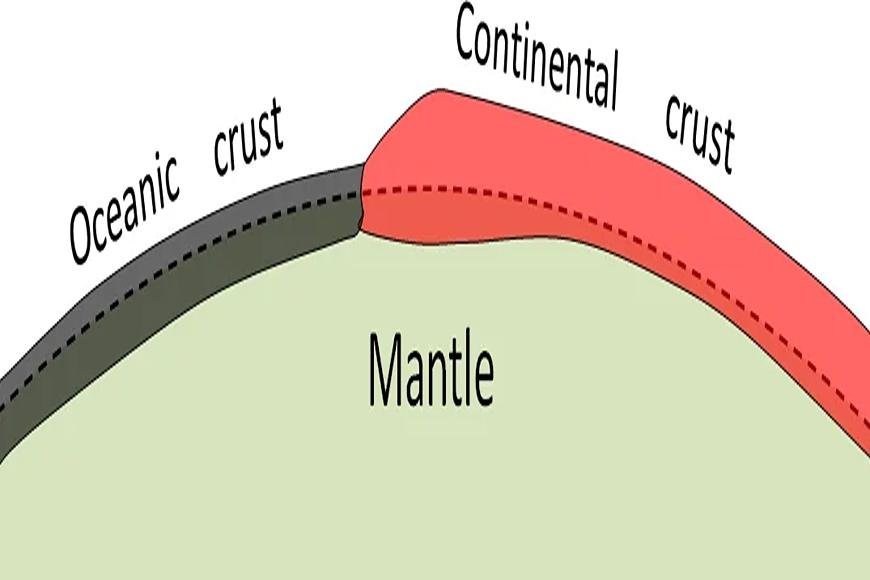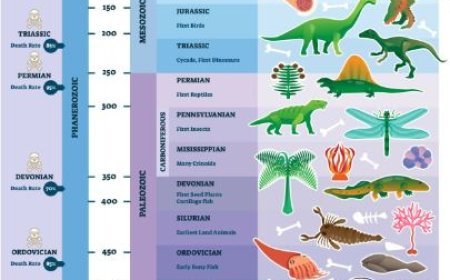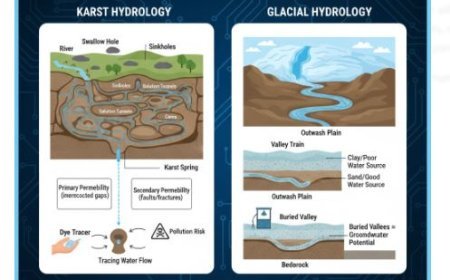ISOSTASY
Earth's Balancing Act: Isostasy keeps mountains high and ocean floors deep, with crust "floating" on denser mantle.

ISOSTASY
- The idea that the lighter crust floats on top of the heavier mantle below is called isostasy.
- It's used to explain how different heights of landforms can happen on Earth's surface.
- Isostatic stability is the best possible state in which the crust and mantle would remain if nothing were to upset them.
- Ice caps expanding and contracting, erosion, sedimentation, and extrusive volcanism are a few of the factors that cause isostasy to shift.
- It changes the lithosphere's physical features based on how the mantle and crust react to these changes.
- Figuring out how isostasy changes over time helps us understand more complicated processes like how mountains form, how rock basins form, how continents break apart, and how new ocean basins form.
Theory of Isostasy
- The theory of isostasy is one of the basic ideas behind why the Earth's lithosphere rests on top of the more flowing asthenosphere, which is part of the upper mantle.
- The idea is like how things float in water; the buoyancy is based on the mass and amount of the fluid being moved.
- The shell of the Earth, also called the lithosphere, is in gravity balance and "floats" at a certain height based on how thick and dense it is.
- Parts of the Earth's crust that are thicker and have more mountains will go deeper into the asthenosphere, which is less solid.
- Below a certain depth, called the "isostatic depth" or "adjustment depth," the pressure from the rock column above is the same everywhere, no matter how the surface is shaped.
- When weight is added to or taken away from the crust, for example by weathering, deposition, or the building up and melting of glacier ice, the crust moves up or down until it is back in balance. The name for this process is isostatic correction or isostatic bounce.
Two Views in Isostasy
Airy’s View
- In the 1800s, a British scientist by the name of George Biddell Airy created the first isostasy model, known as the Airy Isostasy.
- In this model, the lithosphere, which is the top shell of the Earth, is thought to be a series of blocks with a fixed density. The pieces' densities stay the same, but their thicknesses change.
- Think about an iceberg that is floating in the water. The "root" of the iceberg is below the water's surface, and the tip sticks out.
- The longer the root goes below the ground, the bigger the tip of the iceberg.
- In the same way, hilly parts of Earth have a thicker layer of crust (called a "root") that goes down into the denser core in airy isostasy.
- It takes this extra "root" to balance out the mountain's extra weight on top.
- Over time, erosion takes away the mass of a rock, and the crust below rises to keep the isostatic balance. Airy isostasy basically describes a "floating" lithosphere where the thicker parts go deeper into the mantle, like how bigger icebergs sink deeper into the water. This model says that the thickness of the Earth's crust is different under mountain ranges and ocean basins.
- The thicker parts of the crust (mountains) "float" higher on the asthenosphere, like how the bigger parts of an iceberg that are underwater stick out further above the water.
Pratt’s View
- British geologist John Henry Pratt came up with a different way to understand isostatic balance in his Pratt Isostasy model.
- Pratt's theory is based on how dense the blocks are in the lithospheric region, not how thick they are.
- Think about a wooden block and a sponge that are about the same size and are floating in a tub of water.
- The sponge will rise higher than the wooden block, even though they are the same size. This is because the sponge is less thick. In the same way, Pratt isostasy means that parts of the Earth's crust that are less dense "float" higher on the denser mantle than parts that are heavier.
- These parts could be made of less dense rocks or be covered by large sedimentary layers.
- Pratt's model contends that these variations in crustal density are what cause the various heights we observe on the Earth's surface, from plains to plateaus.
What's Your Reaction?



































